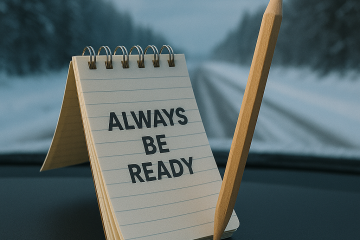Statistically, we all know that an emergency of one variation or another is coming our way. What we do not know is what emergency and when. If you take all emergencies that you may ever experience or expect in your area, anytime is as likely statistically as any other. An emergency occurring tomorrow is just as likely as one occurring ten years from now.

Earthquake in Japan photo c/o japansociety.org
Of course, geographically speaking, there are certain emergencies that are more probable than others. For example, in California, Japan or South America, it could be a major earthquake. On the east coast, it could be a hurricane. In the Midwest, it could be a tornado. In the state of Utah, we haven’t had a tornado for several years, but we are due for a major earthquake. Utah has heavy snowstorms that rage in the winter, and fires that have been known to plague the state during the summer. While it’s not probable that we’ll see a snowstorm this summer, that doesn’t decrease the probability of one of the many potential emergencies, or the advice to prepare now for an emergency any less important today.
Since we know statistically that we will encounter some sort of an emergency at some point in the future, what are we doing to prepare now?

Prepare Now: it's a race against time. Photo c/o pandemiclabs.com
Every day you put off your emergency preparedness efforts, you’re rolling the dice. Statistically, we are operating on a limited time frame, and even though we don’t know what that time frame is, it is a finite period of time. It could be 50 years. It could be 100 years. It may only be 10 years. It might be this year. The problem is that people assume every day has the same probability as the next for an emergency to catch them unaware, so they put off their preparations until a more “convenient” time in the future (but prior to the emergency, of course!). But this simply isn’t the case. Each day you delay preparing for an emergency, you increase your chances of being caught unprepared.
If you knew now that a catastrophic emergency was going to plague us sometime in the next 10 years, that would leave you a possible 3650 days to bet against. In other words, the chance of an emergency happening tomorrow would be 1 in 3650 (you hope it’s the last one, of course). However, if another five years passed uneventfully, then your chances would no longer be 1 in 3650 but would drop down to 1 in 1825. Each day you don’t prepare, the chances of emergency probability move up exponentially, regardless of the “when” or “what”. If you aren’t currently experiencing a major emergency, the next one is coming and is just a matter of undefined, unknown finite period of time.
The solution? Prepare now. Don’t delay.
To see our upcoming event schedule, click here
Check out our inhome-course programs
Subscribe to Preparedness Pro today and never miss a thing!
For any questions or comments on this article, please leave a comment on the blog site so that everyone can benefit!
Copyright Protected 2009, Preparedness Pro and Kellene. All Rights Reserved. No portion of any content on this site may be duplicated, transferred, copied, or published without written permission from the author. However, you are welcome to provide a link to the content on your site or in your written works.

